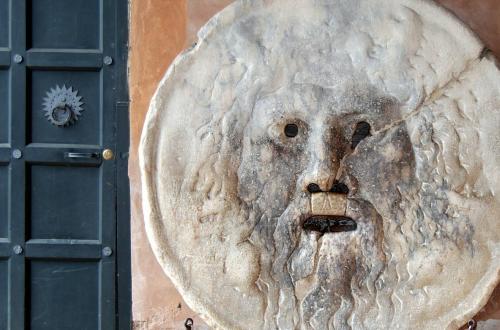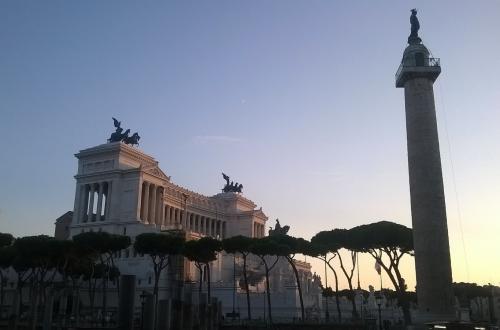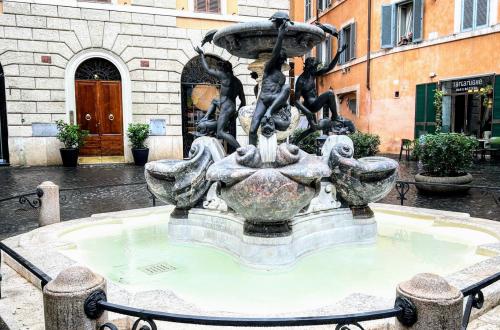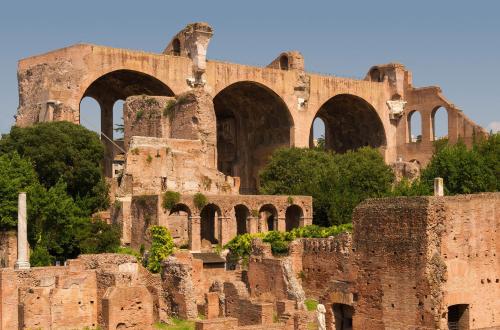L’Amphithéâtre Flavio (Colisée)

 Condividi
Condividi
The Casale dei Cedrati at Villa Pamphilj reopens its doors.
After the purchases of land and vineyards and the concession of the Acqua Felice in the first decade of the 17th century, the construction of the palace took place substantially in one year, from 1
[...]Castello Chigi (detta anche Villa Chigi-Sacchetti) è una villa fortificata situata nel parco urbano Pineta di Castel Fusano.
This is a pope's country residence, begun by Sixtus IV around 1480 and completed by Leo X.
The Praetorian Camp was built by Emperor Tiberius between 21 and 23 AD.
Area funeraria situata lungo la Salaria Vetus. Il cimitero, che risale alla prima metà del III sec.
The catacombs have been named after the Roman martyr Felicita, who had converted to the Christian religion and was executed in 165 AD under Emperor Antoninus Pius.
A funeral area located along the Via Ostiense.
Originally part of the catacomb of St. Sebastian, now independent from the rest. It developed in the fourth century in connection with, the cult of St. Eutichio.
Located in the underground area of Giovannipoli Park, the Catacombs of Commodilla, a Christian matron, contain, among other things, the crypt with the tombs of the martyrs Felix and Adautto, some B
[...]The Ponziano Catacombs are probably named after the owner of the land. The Cemetery had its greatest development in the 4th century.
The catacombs perhaps take their name from the local landowner of the time and were known as far back as the 16th century, although excavated between 1847 and 1872.
On the site stands the church of St Theresa of the Child Jesus in Panfilo, built between 1929 and 1932.
The origins of the excavation of the catacombs date back to 1918 with the development of the area.
Il percorso sotterraneo più vasto di Roma, oltre 1,5 km di gallerie labirintiche sotto un parco tra i meravigliosi ed affascinanti al centro di Roma, il parco dell'Appia antica.
Enormi gallerie per l'estrazione di tufo che si aprono inaspettatamente sotto un tempio romano, dei laghetti cristallini e una serie di pozzi: un'incredibile esperienza nel cuore d
[...]When, in the 13th century, the friars of the Order of Preachers, commonly called Dominican friars, settled in the Basilica of Santa Maria sopra Minerva, they not only enlarged the church, but also
[...]Antico chiostro situato accanto allo spazio archeologico del Teatro di Marcello sulle rovine del Tempio di Giove Statore.
Rome War Cemetery lies alongside and within the Aurelian Walls of the ancient city of Rome.It was designed by Louis de Soissons and contains 426 Commonwealth burials of the Second World War.
The Laurentino Cemetery, which was dedicated on 9 March 2002, is the third largest cemetery in Rome.
In the heart of the Monte Mario Nature Reserve, accessible from Via della Camilluccia, lies the French Military Cemetery, destined to contain the bodies of French soldiers killed during the Italian
[...]The Laurentino Cemetery, which was dedicated on 9 March 2002, is the third largest cemetery in Rome.
The area around the Church of Santa Croce in Gerusalemme is rich in archaeological ruins referable to a single complex, Palazzo del Sessorio, an imperial villa of the Severan age (3rd century AD).<
[...]The City Garden Aniene, today forming part of the Montesacro district, is located in the north-east of Rome, on a hill along the Via Nomentana, near the confluence of the River Aniene and the Tiber
[...]Situato nel cuore del Rione XX – Testaccio, il complesso architettonico del Mattatoio fu costruito fra il 1888 e il 1891 dall’architetto Gioacchino Ersoch.
Il Presidio Nuovo Regina Margherita affaccia su Piazza San Cosimato, a pochi passi da Viale Trastevere.
Founded by Francis of Paola (1416-1507) in 1494 with funding from the crown of France, the "royal convent of the Trinity of the Mounts" experienced a splendid period between the 16th and 17th centu
[...]
 Condividi
Condividi

 Condividi
Condividi

 Condividi
Condividi

 Condividi
Condividi

 Condividi
Condividi

 Condividi
Condividi